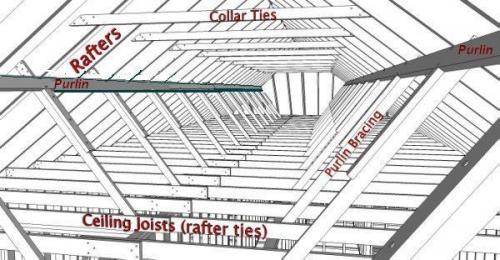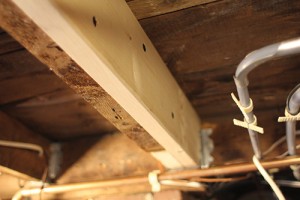Measure the distance from the underside of the roof sheathing at the one third marks on the gable end rafters to the tops of the corresponding strongbacks below.
Attaching strongback in attic.
This process forms the second part of attaching the clips.
By installing strong backs or beams in the attic will create a solid d.
Prevent this unfortunate series of events by bracing your rafters to make them sturdy and resistant to snow loads and wind.
With this application the strongback joist works in conjunction with the beam to help keep floors and ceilings level even if the support or weight bearing beam should begin to deteriorate over time.
Strongback bridging is an excellent and inexpensive way to improve the overall rigidity of the floor system and eliminate vibration.
The same general concept may be used to reinforce staircases by attaching the strongback bracing to the stringers on the staircase making it possible for the structure to remain stable even when subjected to stress that would normally cause the stringers to fail.
Cut two 2 by 6 inch pieces of.
In homes with flat ceilings and an attic space the bottoms of opposing rafters should be fastened together with ceiling joists which form rafter ties when rafters have been installed perpendicular to the ceiling joists rafter ties typically rest on top of the ceiling joists.
Add hangers to attach the ceiling joists to the new load bearing beam.
The nails should be 2 5 in 6 4 cm the same as earlier.
These nails do not go through the base plate of the clip they go through the small extension plate the diagonal beam actually sits in.
Use a minimum of 2 nails here going into the beams.
Sagging rafters are a sign that a house is in serious trouble.
Cut out enough ceiling to pass the material into the attic space.
It serves to make the floor more comfortable for those living and working in a structure.
When sagging gets too severe it can lead to roof collapse and once the roof goes the house won t last for long.
The drywall can be patched later.





























